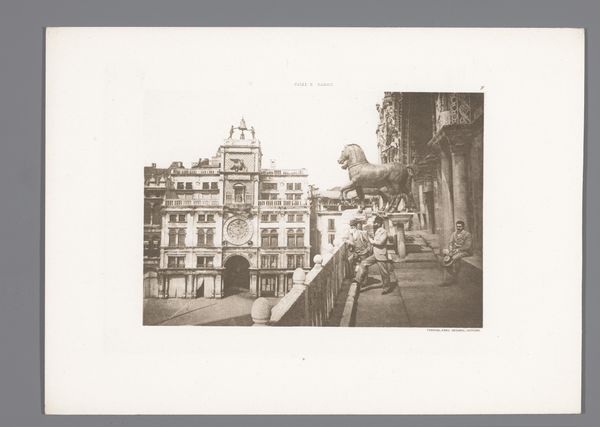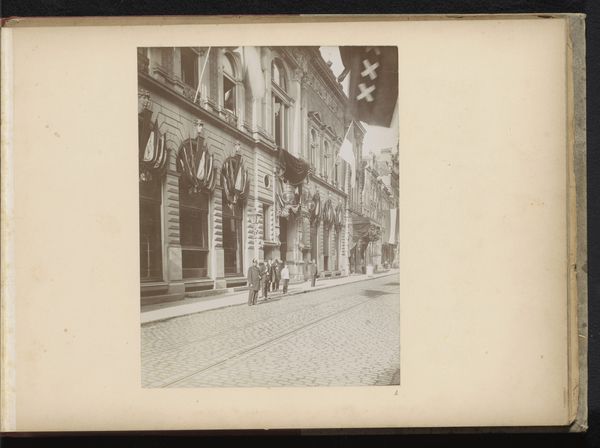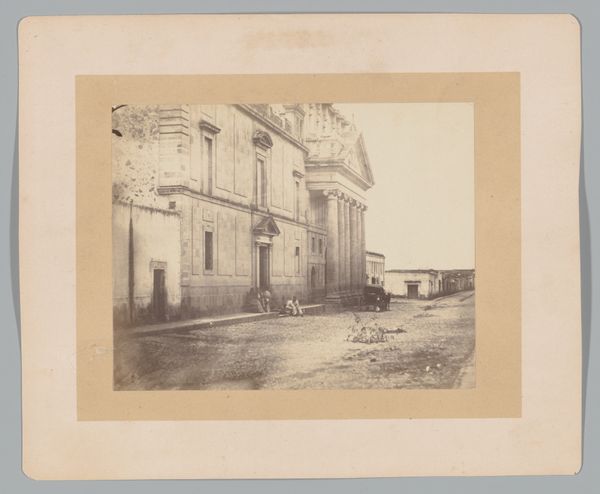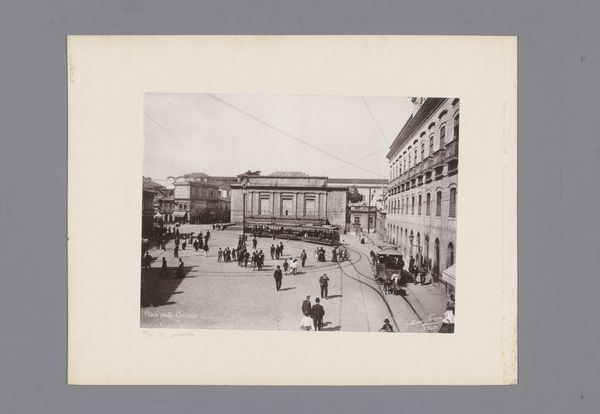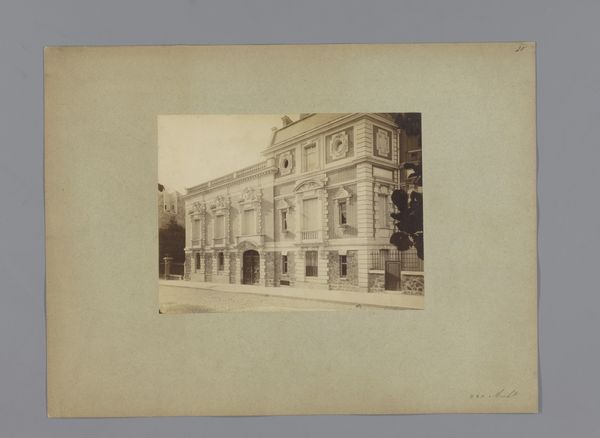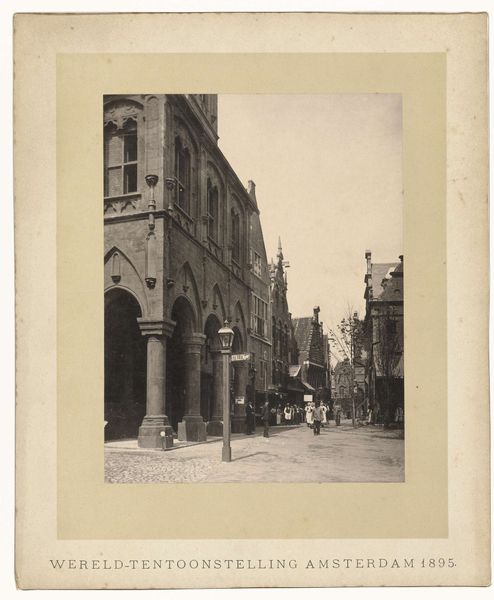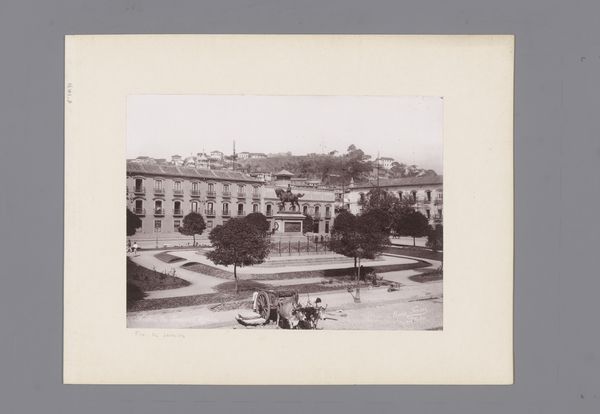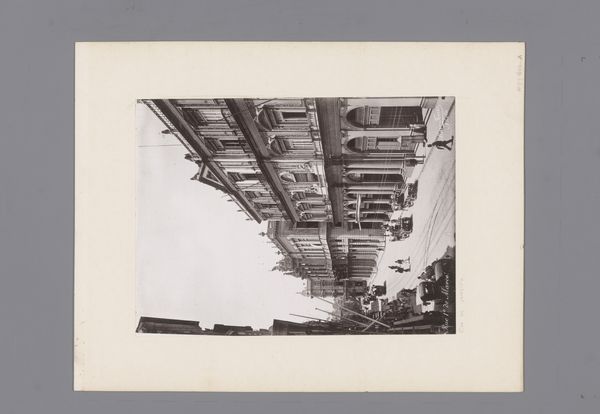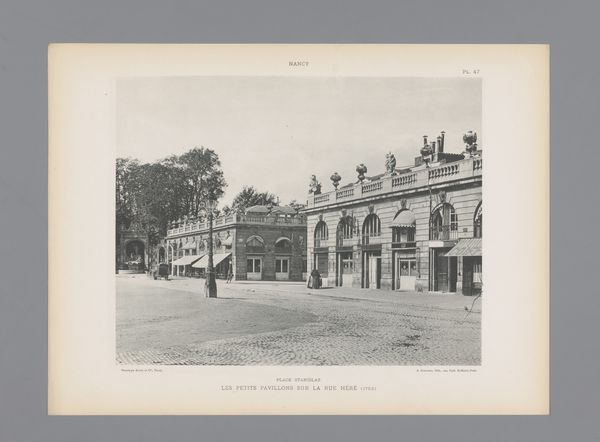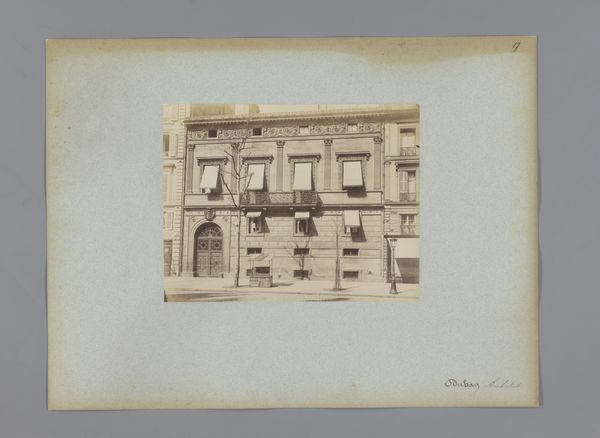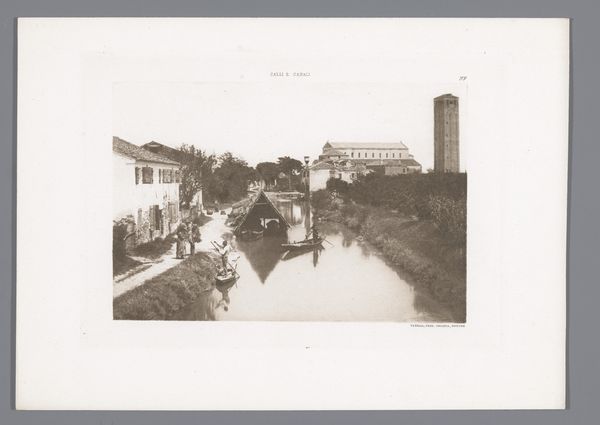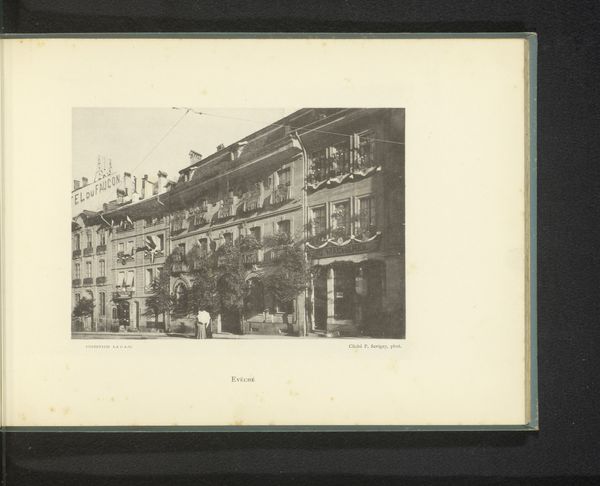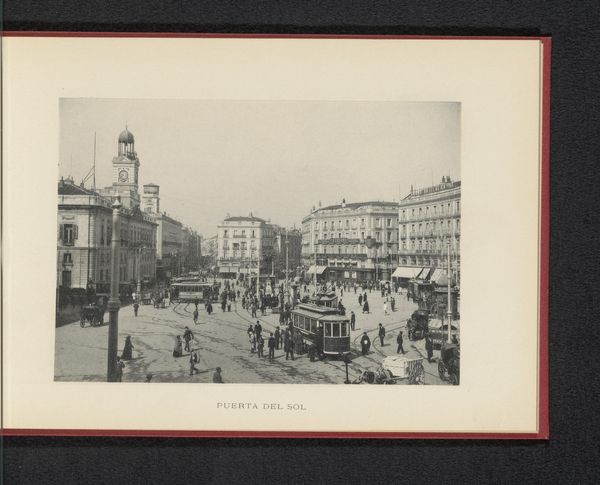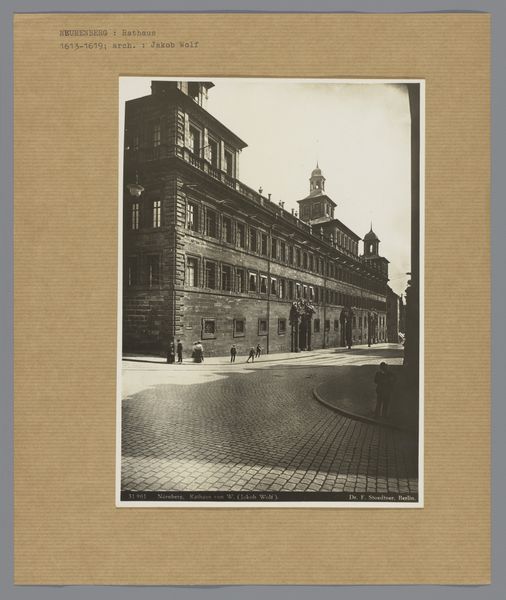
Straatgezicht in rua primeiro de Março met het gerechtsgebouw en de kerk da Cruz dos Militares in Rio de Janeiro 1890 - 1910
0:00
0:00
photography
#
african-art
#
street-photography
#
photography
#
cityscape
#
realism
Dimensions: height 172 mm, width 233 mm, height 257 mm, width 332 mm
Copyright: Rijks Museum: Open Domain
Curator: This photograph, taken by Marc Ferrez between 1890 and 1910, offers a striking street view in Rio de Janeiro: “Straatgezicht in rua primeiro de Março met het gerechtsgebouw en de kerk da Cruz dos Militares in Rio de Janeiro.” Editor: My initial response is one of stark observation. It feels very formal, structured. The geometry of the buildings and the street itself impose a certain order, yet the human figures scattered about hint at a more complex lived reality beneath. Curator: Indeed, Ferrez's photographic practice frequently documented Brazil’s urban transformations. In this piece, the imposing architecture signifies the rapidly modernizing infrastructure—representative of evolving socio-political structures within a burgeoning Brazil. We must consider photography at this time, the limits of its capabilities, and the artistic license Ferrez took when choosing framing and subject. Editor: And I see it! The contrast between the grand architecture and the figures going about their day makes me consider ideas around power, class, and representation. The building on the left exudes authority through its scale and classical features; do you think this portrayal normalizes power structures, or possibly critiques them? What kind of agency, then, do these ordinary citizens truly possess within this constructed frame? Curator: Ferrez was from a privileged background, he photographed what he knew. The politics of visibility are undeniably at play. Who is seen, how are they seen, and what narratives are subtly being reinforced through the selective framing of the lens? The technical clarity emphasizes social divisions present at that time; you can almost read inequalities through spatial dynamics. Editor: It's that interplay that intrigues me, where form and content work together to convey these intricate socio-economic commentaries. So the photo's historical narrative unfolds—a reminder that representation is never a neutral act, but always steeped in contextualized social dialogues. Thank you for clarifying this with me! Curator: A stimulating reading! Considering the lens through which these photographs were taken—social context and historical perspective—enriches our interpretation and emphasizes ongoing questions about inequality and portrayal.
Comments
No comments
Be the first to comment and join the conversation on the ultimate creative platform.
